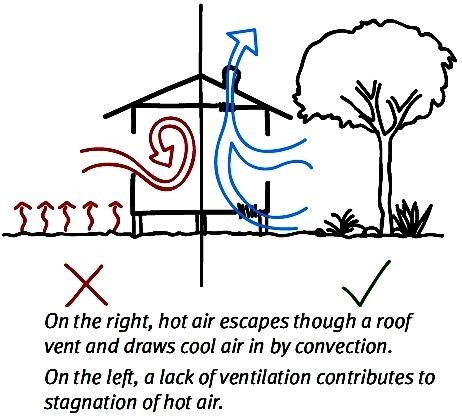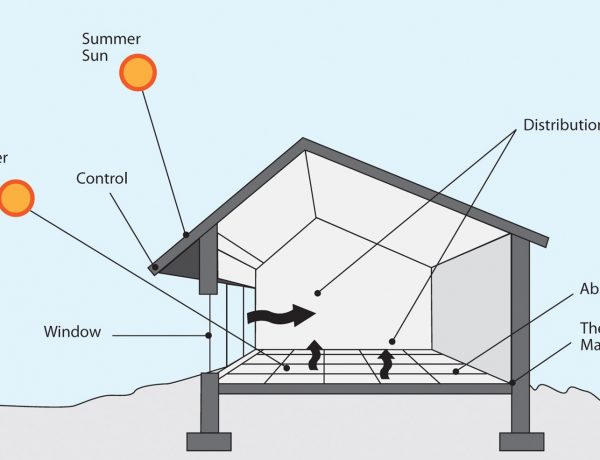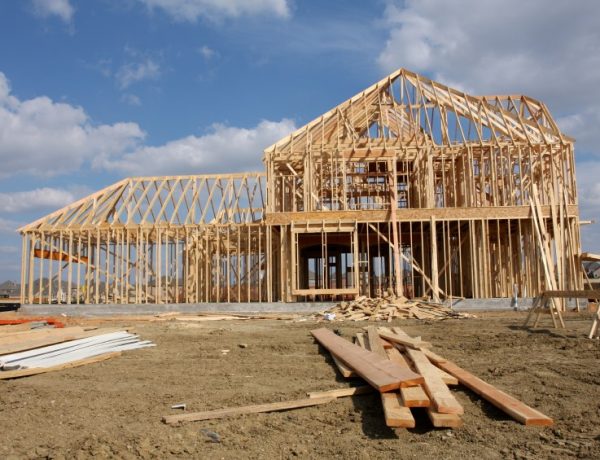One of the good things about building a house today compared with decades ago is that modern houses tend to be warmer in winter, cooler in summer, insulated, and lacking in draughts. They’re all pretty great improvements, but don’t really address one thing: air quality. More specifically, we’re talking about ventilation and airflow, or more simply put: replacing stale air with fresh air without compromising the insulating qualities of our homes.

Why is this an issue? Well, if we build our homes without draughts and our windows and doors sit tightly in their frames, and walls and ceilings are stuffed with thick insulation we’re actually making our homes more airtight, which can lead to stale air. If you’ve ever travelled on a packed train or bus with poor ventilation, you’ll have a pretty good idea of how unpleasant stale air can become. In a home we can combat stale air by simply opening a window or a door to re-fresh things a bit. However, if this isn’t done correctly, we might actually be letting in the heat or the cold, or the opposite: letting it out, and that means all that great building work and insulation has just become relatively ineffective. At the other end of spectrum, relying on draughts and air leaks to refresh the air in a home is equally ineffective because we have no control over when the air comes in and out, which can play havoc with trying to heat and cool a home. But the fact is, we don’t have to choose between good air or good insulating properties, we just need to plan for both.
In regards to ventilation, there are two options: mechanical ventilation and passive ventilation. Mechanical ventilation involves the use of a mechanical device to control ventilation in a home or room.

Some of the more obvious kinds of mechanical ventilation systems are exhaust only, meaning they mostly suck air out of the home, but don’t bring a lot back in. These include typical ducted rangehoods in kitchens and exhaust fans in bathrooms, both being designed to direct moisture outside to reduce humidity and condensation. More balanced systems have outlets and inlets to bring air in and out of a space and when set up correctly can ventilate an entire home on their own. Balanced systems, however, often require ducts and vents to many rooms and require energy to run the fans that move the air around.
Passive ventilation systems, on the other hand, simply refer to the use of doors, windows and vents to allow for airflow in a home.

Depending on the climate and location of your home, passive ventilation when combined with mechanical exhaust systems in the kitchen and bathroom areas can provide all the airflow your home needs without negatively affecting the insulating properties. This is possible because, when done correctly, a home only needs to be passively ventilated for approximately 15 – 20 minutes a day. So how does it work? Overall, it has a lot to do with the size and placement of your windows and doors and is dependent on the direction of the breeze. Most rooms will require the area of openable doors, windows and vents to the outside to be approximately 5% of the overall floor area, while considerably higher for more moisture prone rooms. To ensure that a home can be properly ventilated within the 15 – 20 minute period, windows and other openings such as doors and vents should be placed at opposite ends of the building to create cross flow; this allows for the air to travel through uninterrupted pathways in your home, and can be aided by ensuring internal doors are left open during the ventilation process. If the breeze is also blowing in the same direction as the pathways inside your home, such as from east to west or north to south, then the air can move quickly and efficiently.
Ultimately, the climate and positioning of your home may affect what works best for you, but no matter what the situation, a solution to creating effective ventilation can be found without having to compromise on the quality of your heating and cooling.





No Comments